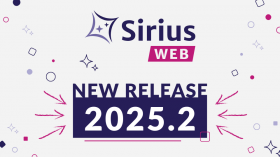 Replay of Capella Webinar - Thursday, May 15th, 2025
MBSE Approach to Creating and Exploiting Digital Systems for HORIZON Europe
This presentation is based on Horizon Europe Project Demo-BLog where the business needs where pre-defined, and the challenges focused on defining requirements at an abstract opportunity/problem space domain level for an automated renovation advice tool.
To accomplish this task, a System Definition process was undertaken to achieve the Engineering solution space domain. And to achieve the System Definition methodology the author decided to focus on first creating an Interface Control Document that consisted of high-level overview architecture of the target system CLEA (Digital Building Logbook) and the source system BDNB (Base de Données Nationale des Bâtiments).
However, the alternative architectures presented challenges such as how to validate the requirements at this stage. The chosen tool/technique was THALES (Model-Based System Engin...
Replay of Capella Webinar - Thursday, May 15th, 2025
MBSE Approach to Creating and Exploiting Digital Systems for HORIZON Europe
This presentation is based on Horizon Europe Project Demo-BLog where the business needs where pre-defined, and the challenges focused on defining requirements at an abstract opportunity/problem space domain level for an automated renovation advice tool.
To accomplish this task, a System Definition process was undertaken to achieve the Engineering solution space domain. And to achieve the System Definition methodology the author decided to focus on first creating an Interface Control Document that consisted of high-level overview architecture of the target system CLEA (Digital Building Logbook) and the source system BDNB (Base de Données Nationale des Bâtiments).
However, the alternative architectures presented challenges such as how to validate the requirements at this stage. The chosen tool/technique was THALES (Model-Based System Engin...
News
 Replay of Capella Webinar - Thursday, May 15th, 2025
MBSE Approach to Creating and Exploiting Digital Systems for HORIZON Europe
This presentation is based on Horizon Europe Project Demo-BLog where the business needs where pre-defined, and the challenges focused on defining requirements at an abstract opportunity/problem space domain level for an automated renovation advice tool.
To accomplish this task, a System Definition process was undertaken to achieve the Engineering solution space domain. And to achieve the System Definition methodology the author decided to focus on first creating an Interface Control Document that consisted of high-level overview architecture of the target system CLEA (Digital Building Logbook) and the source system BDNB (Base de Données Nationale des Bâtiments).
However, the alternative architectures presented challenges such as how to validate the requirements at this stage. The chosen tool/technique was THALES (Model-Based System Engin...
Replay of Capella Webinar - Thursday, May 15th, 2025
MBSE Approach to Creating and Exploiting Digital Systems for HORIZON Europe
This presentation is based on Horizon Europe Project Demo-BLog where the business needs where pre-defined, and the challenges focused on defining requirements at an abstract opportunity/problem space domain level for an automated renovation advice tool.
To accomplish this task, a System Definition process was undertaken to achieve the Engineering solution space domain. And to achieve the System Definition methodology the author decided to focus on first creating an Interface Control Document that consisted of high-level overview architecture of the target system CLEA (Digital Building Logbook) and the source system BDNB (Base de Données Nationale des Bâtiments).
However, the alternative architectures presented challenges such as how to validate the requirements at this stage. The chosen tool/technique was THALES (Model-Based System Engin...
 Replay of Capella Webinar - Thursday, April 3rd, 2025
Unifying Digital Threads: Capella and Interoperability to support a Synchronized Source of Truth
Modern systems have become more and more complex, requiring the use of a wide range of tools to successfully manage their development. Considering this situation, seamless connectivity and interactions between those tools is of paramount importance to build a consistent and valuable digital thread.As many development programs involve different organizations, there is also a growing need for connecting digital threads together to facilitate decision making. This poses a challenge of building interoperable toolchains that enable collaboration, data exchange and global configuration management along the system life cycle.Capella, while offering an excellent framework for program collaboration and systems of systems development with the ARCADIA Method, can participate in this endeavour by being integrated into a Synchronized Sour...
Replay of Capella Webinar - Thursday, April 3rd, 2025
Unifying Digital Threads: Capella and Interoperability to support a Synchronized Source of Truth
Modern systems have become more and more complex, requiring the use of a wide range of tools to successfully manage their development. Considering this situation, seamless connectivity and interactions between those tools is of paramount importance to build a consistent and valuable digital thread.As many development programs involve different organizations, there is also a growing need for connecting digital threads together to facilitate decision making. This poses a challenge of building interoperable toolchains that enable collaboration, data exchange and global configuration management along the system life cycle.Capella, while offering an excellent framework for program collaboration and systems of systems development with the ARCADIA Method, can participate in this endeavour by being integrated into a Synchronized Sour...
 Let's see what are the new features and improvements in Sirius Web 2025.2
The latest Sirius Web 2025.2 release brings significant improvements to enhance user experience and expand customization capabilities. This update introduces new features, including advanced layout configurations for Form representations, improved interactivity in Table representations, and further refinements to Explorer functionalities.
Learn more about these updates and how they can optimize your modeling experience in our latest blog post:
Read the full article...
Let's see what are the new features and improvements in Sirius Web 2025.2
The latest Sirius Web 2025.2 release brings significant improvements to enhance user experience and expand customization capabilities. This update introduces new features, including advanced layout configurations for Form representations, improved interactivity in Table representations, and further refinements to Explorer functionalities.
Learn more about these updates and how they can optimize your modeling experience in our latest blog post:
Read the full article...
Replay of Capella Webinar - Thursday, March 13th 2025
System Modeling Workbench: Aligning Configurations, Enhancing Collaboration, and Improving User Experience
This webinar explores advancements in Systems Modeling Workbench, focusing on aligning system models with product configurations, integrating operational analysis into the digital thread, and leveraging TcX support for efficient collaboration. It also highlights user experience improvements, including requirements display in diagrams, model validation to reduce publication errors, and enhanced role-based design access.
***
Presented by:
Albino Pereira Software Development Manager (Siemens Digital Industries Software)Albino PEREIRA joined Siemens in 2006, bringing a decade of expertise in Printed Circuit Board (PCB) manufacturing. Throughout his career, he has contributed to numerous Teamcenter projects as a Development Manager, including ECAD PCB visualization, ECAD integrations, and MBSE parameters ma...
 Partnership between Obeo and AXONE
We are excited to announce our partnership with Axone, an expert in Systems Engineering, Dependability, and MBSE training. Together, we support companies in implementing Capella and MBSE methodologies tailored to their needs.
A partnership structured around three key areas:
Systems Engineering & Project Execution: Deployment of MBSE processes, methods, and tools, requirements management, and system modeling,
Dependability & Nuclear Safety: Risk analysis, FMEA, reliability assessment, and regulatory compliance,
MBSE & Systems Engineering Training: Upskilling teams in modeling and requirements management.
For futher informations: https://www.obeosoft.com/en/company/partners/axone
...
Partnership between Obeo and AXONE
We are excited to announce our partnership with Axone, an expert in Systems Engineering, Dependability, and MBSE training. Together, we support companies in implementing Capella and MBSE methodologies tailored to their needs.
A partnership structured around three key areas:
Systems Engineering & Project Execution: Deployment of MBSE processes, methods, and tools, requirements management, and system modeling,
Dependability & Nuclear Safety: Risk analysis, FMEA, reliability assessment, and regulatory compliance,
MBSE & Systems Engineering Training: Upskilling teams in modeling and requirements management.
For futher informations: https://www.obeosoft.com/en/company/partners/axone
...



